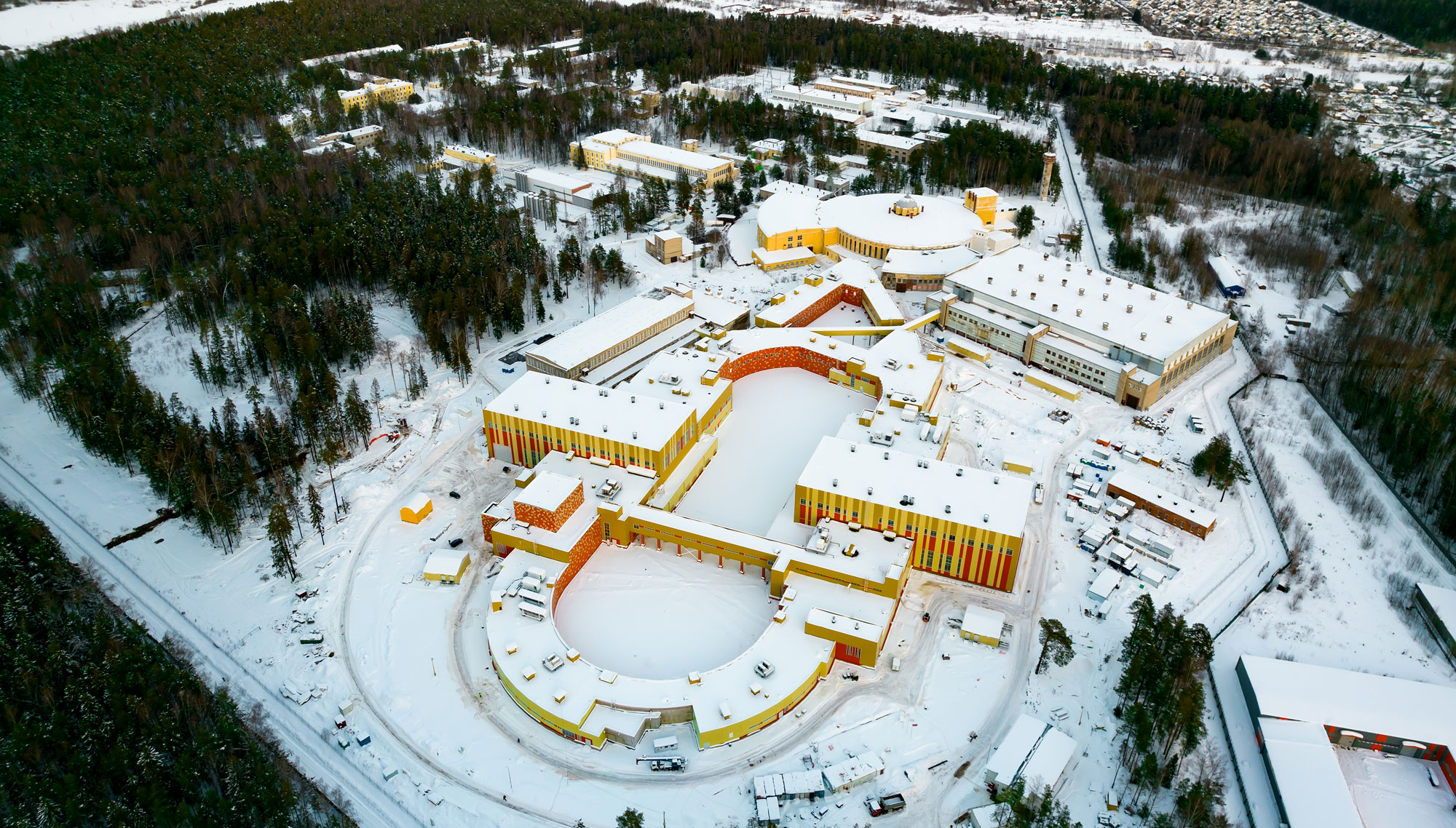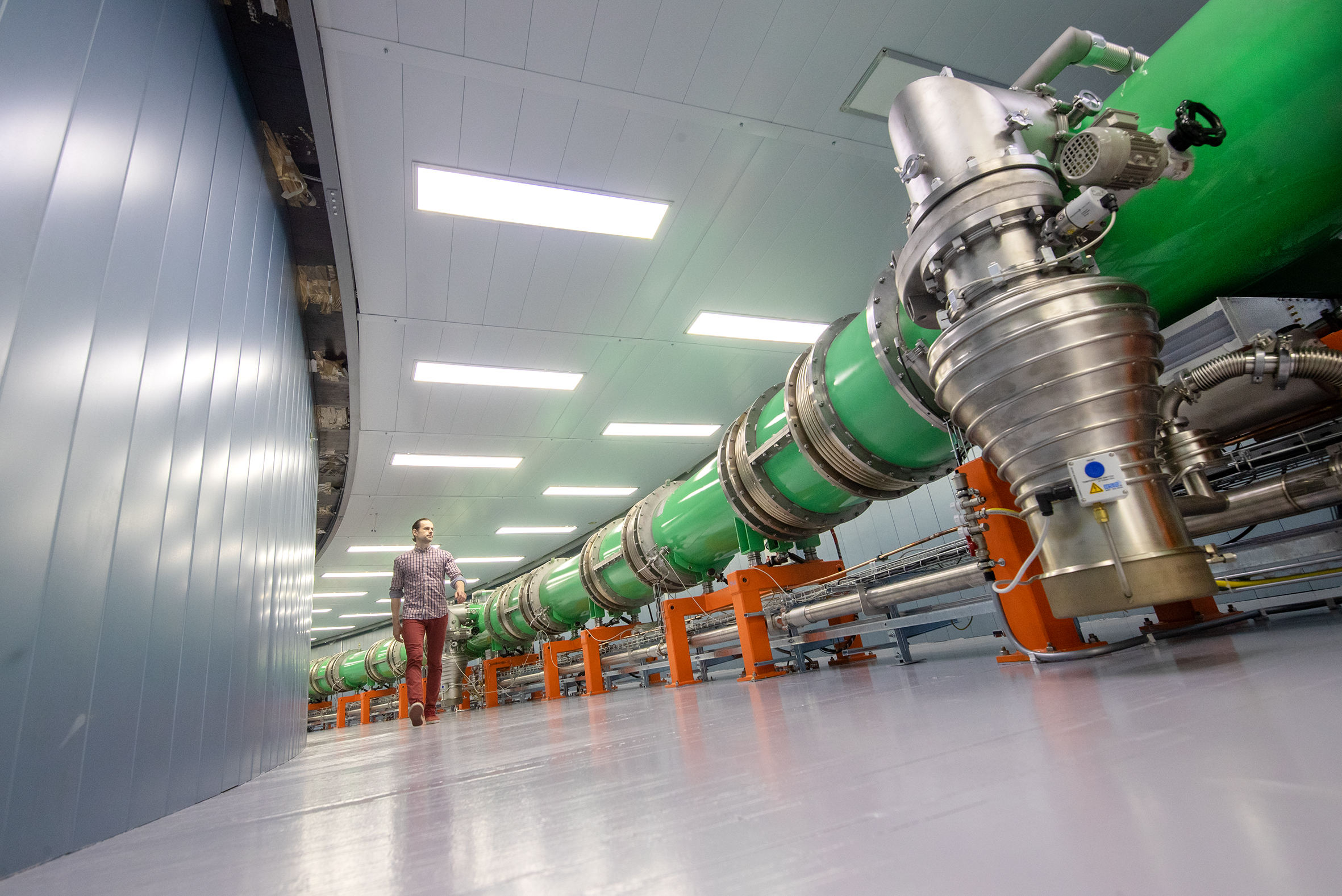Nuclotron and Booster of NICA successfully cooled
News, 26 January 2022
The current third commissioning cycle, which has started at the very beginning of 2022, is being carried out at the injection complex of the NICA collider that includes two linear and two cyclic superconducting accelerators, namely the Nuclotron and the Booster, as well as the extraction system of accelerated ions from the Nuclotron. On 23 January, one of the most significant stages of the commissioning cycle was completed. For the first time, two cyclic accelerators were jointly cooled down to operating temperatures.
On 3 January 2022, tests of the vacuum pumping system of the Nuclotron and Booster rings started, as well as technological procedures for preparing for magnet structure cooling of both rings.
On 6 January, the cooling of the superconducting magnetic system of the Nuclotron ring started after a three-year shutdown. The next stage started on 12 January. The aim was to cool the magnet cryostat system of the Booster using its own standard cryogenic system. This cryogenic system was specially designed for the Booster in the UK and was installed in December 2021. At the moment, the Booster’s cryogenic system has been launched and successfully tested. On 23 January, the Booster was cooled to the operating temperature of liquid helium of 4,5 K. It took a little longer than expected because of some compression limits: a new cryogenic compressor station of the NICA complex has not been launched yet.
“In the previous second commissioning cycle, we launched and tested a beam transportation channel from the Booster ring to the Nuclotron ring. The INR SB RAS supplied the channel equipment but did not inject the beam into the Nuclotron as the Nuclotron injection system was not yet ready at that moment,” Deputy Director of the Laboratory of High Energy Physics JINR Andrey Butenko commented on the progress of the commissioning. “We are currently launching the full complex together with a new unique injection system and hope that the accelerated heavy ion beam from the Booster will be transported to the Nuclotron and it will be accelerated up to the design energies necessary for conducting physical experiments in the near future.”
He added that the beam will be injected into the collider many times after passing the injection complex. Thus, the beam will be accumulated until its intensity reaches the value necessary to ensure the design luminosity in the experiment.
The aim of the current commissioning cycle, as the expert noted, is, firstly, to run and adjust all systems of the injection complex together for the first time, having previously cooled both ring accelerators – the Booster and the Nuclotron. Their joint work will be tested during the third cycle scheduled to be conducted until the beginning of March 2022 as scheduled.
As a result, joint operation modes of all the elements of the injection complex should be adjusted, as well as measurements of irradiation and radiation levels are supposed to be made in the design mode of the complex.
Then, this commissioning cycle involves operations with the beam: acceleration of carbon ions with a charge of 4+ in the Booster up to an energy of 500 MeV/n with carbon stripping to a charge of 6+ with transportation into the Nuclotron and acceleration in the Nuclotron up to the energies of 3.5 GeV/n.
The next stage is to adjust the slow beam extraction system and transport the beam through the charged particle transportation channel to the BM@N experimental facility. This channel has been significantly modernised: the pumping system of the ion guide and the beam diagnostic system have been upgraded, the power supply system of all magnetic elements has been completely replaced. All this equipment also requires testing and adjustment.
After that, commissioning will be carried out already at the BM@N facility within the commissioning cycle. The facility will operate according to its programme with the measurements of the radiation background around the setup and tests of adopted design decisions to ensure radiation safety.
The end of the third cycle of commissioning at the NICA collider is scheduled for early March.

